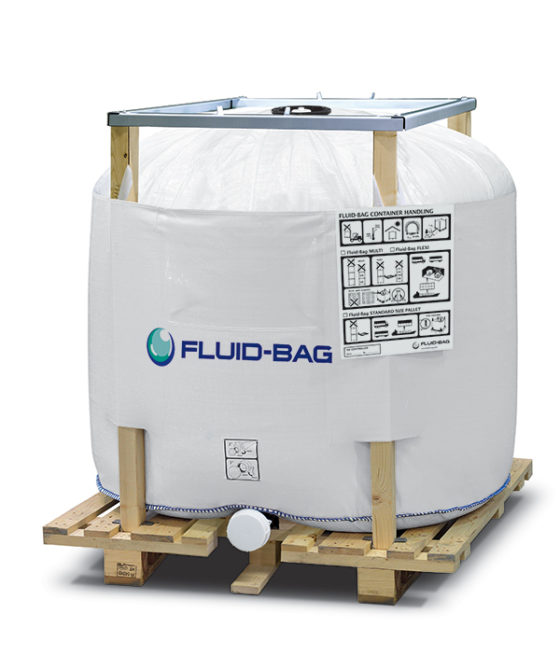For the lubes and greases sector, innovation extends far beyond the complex formulations that fill our workshops, factories and store shelves. Packaging is paramount, and rather than relying on standard drums, containers and totes, brand owners are looking for unique solutions that provide the perfect balance of performance, convenience and protection for the products within.
These may incorporate tamper-proof seals and security caps, pull-out spouts for precise pouring, fill level indicators and durable anti-counterfeit labeling with QR codes to access additional technical information and data sheets.
Above all, a successful lubricant container must be robust, ergonomic and easy to handle.
Valvoline’s Easy Pour Bottle, for example, has won plenty of plaudits. It was recognized with the world’s largest annual consumer award for product innovation as winner of the 2018 Product of the Year in the Car Care Category. The motor oil supplier was praised for the handle design and resealable overcap, as well as the bottle’s spout and anti-glug tube.
“Consumers are at the heart of any innovation that Valvoline launches in the marketplace,” said Heidi Matheys, senior vice president & chief marketing officer at Valvoline. “In our consumer segment, our packaging has a lot of important roles. Product protection, usability, as well as branding and marketing, are all components of packaging we spend time evaluating. Each brings unique challenges to the table.”
“Whether through feedback at the retailer or consumer level, or legislation, sustainability is shaping the future of packaging,” she added. “We continue to work at this to improve our environmental impact. Examples of this include the use of recycled materials, projects focused on light-weighting materials, and participation in industry efforts to improve packaging recycling.”
|
It’s often said that the best things come in small packages, and with the increased uptake of flexible packaging and pouches in recent years, it appears many end users believe that to be true.
|
Consumers and end users have become far more conscious about the importance of greener solutions and packaging that is easier to clean, reuse and recycle. Studies suggest there is even a willingness to pay a premium for more environmentally-friendly options.
It’s often said that the best things come in small packages, and with the increased uptake of flexible packaging and pouches in recent years, it appears many end users believe that to be true.
Back in 2012, Wichita-based Universal Lubricants—now a subsidiary of PetroChoice—was thought to be the first United States company to introduce a retail motor oil in a pouch. It consisted of three barrier layers of nylon, polyester and linear low-density polyethylene, and incorporated a spout designed to prevent glugs and spills.
Its Eco Ultra FlexPak stand-up pouch was heralded as a lightweight and sustainable alternative to bulkier rigid plastic containers, winning the Automotive Aftermarket Products Expo 2012 New Packaging Award for Innovation.
Strong and durable, convenient and easy to store, pouches have since been wholly embraced by the sector.
“We continue to be the fastest-growing segment of the packaging industry in the U.S. and worldwide,” noted Alison Keane, president and CEO at the Flexible Packaging Association, adding that their environmental credentials are far better than traditional rigid containers.
From water usage, greenhouse gas emissions and fossil fuel consumption to the product-to-package ratio, or the material that heads to landfill, the pouch routinely comes out on top, she said.
Not only do pouches also use the least amount of material to package and protect the product, there is less waste too. Rigid containers can leave as much as 6% to 14% of the product behind, while pouches can evacuate up to 99.5% of the product.
“According to the U.S. Environmental Protection Agency Waste Hierarchy, the most preferred method for waste management is source reduction,” added Keane. “A major benefit of flexible packaging is the high product-to-package ratio that it offers and what is key is that it can do so without sacrificing performance attributes, like strength and shelf life. This is due to the incredible innovation in the design of each layer of flexible packaging. You may have five to 10 layers, and each plays a key role in protecting the product through processing, shipping, retail and use in a home or business.”
Another relatively new concept is the bag-in-a-box, a single-use cardboard container that houses a plastic bag filled with product. Recognized for being easy to stack, store and ship, these use far less material than the equivalent-sized rigid plastic bottles, significantly helping to reduce landfill waste.
Fuchs Lubricants first introduced its Lube Cube in 2012 to tackle growing environmental concerns. The packaging system was shortlisted as a finalist in the Supply Chain Solution of the Year category for the United Kingdom Packaging Awards last year.
The Lube Cube is fully recyclable and can be included with the normal recycling waste, resulting in significant savings with its disposal. The 20-liter version uses 79% less plastic than a conventional plastic container and cuts disposal costs by as much as 96%, says Fuchs. Since launch, the company has saved more than 78 metric tons (1.7 million pounds) of plastic, equivalent to 15.6 million plastic bottles or 93.6 million plastic carrier bags.
Boxes are delivered to Fuchs in flatpack form, ready for filling. Some 15,600 of the 20-liter Lube Cubes can be transported on just two trucks, whereas six would be required to deliver the same number of plastic containers.
“These statistics demonstrate the significant reduction in the number of lorries it takes to deliver Lube Cubes in comparison to plastic containers,” said Rosemary Mellor, UK automotive product manager. “Fewer lorries on the roads means less CO2, less congestion and reduced operational costs. It’s good news for everyone.”
Modern packaging is no longer just a way of storing product. It is fundamental to increasing productivity and efficiency, as well as helping to reduce costs and environmental impact.
An effective design will ultimately be judged on whether it is functional and fit for purpose. Yet with portfolios becoming more diverse and lubricants more specialized, there is a growing focus on creating containers that offer much more.
In this Spotlight, Fluid-Bag explains how its packaging solution keeps lubricants clean and free of contaminants, helping to extend the life of equipment.

Keeping Clean and Contaminant Free
Contaminated lubricants can be costly for machinery operators, and even the finest of particles can wear out servos, bearings and pumps. Downtime can be expensive, impacting both productivity and your bottom line.
Packaging that ensures lubes and greases are kept clean can therefore greatly extend the life of equipment and the product itself, says John Robinson, sales manager Lubricants USA at Fluid-Bag.
“What we do with our packaging is deliver a clean product in a sustainable container,” he says. “Today’s packaging has to be smart; it has to solve customers’ problems and issues. It isn’t just about transporting product from where it’s manufactured to the end user.”
Fluid-Bag’s FLEXI and MULTI systems have established themselves as an affordable and effective alternative to conventional drums, totes, and IBCs.
Consisting of a multi-layer foil inner-container and a durable polypropylene (PP) outer transport bag mounted on a pallet, the unique packaging solution stores product in a secure closed system that keeps it free from dirt and dust.

The flexible bag can be filled completely, leaving no air pockets, and the plastic material does not breathe, or expand and contract in different temperatures – helping to prevent moisture contamination. The use of polypropylene also means that unlike a metal container, there is no risk of rust tarnishing the lubricant.
“Ours is a completely sealed container. All our bags are assembled in a clean room so the inside of the bag is evacuated of air before it’s filled. We introduce no particulates, dirt or grime. That can’t be said of other packaging,” says Robinson. “It’s not uncommon to lose several ISO codes of cleanliness when filling a 55-gallon drum, purely because of the environment they’re manufactured in.”
Fluid-Bag’s design also helps minimize wastage compared with rigid packaging, leaving less than 1% residue compared with about 5-10% in a traditional drum, he says. Even then, there is no need to worry about cleaning and returning it for a refill. Once emptied, the single-use inner bag can be easily recycled, removing any risk of contamination.
To find out more, visit www.fluid-bag.com/lubes
